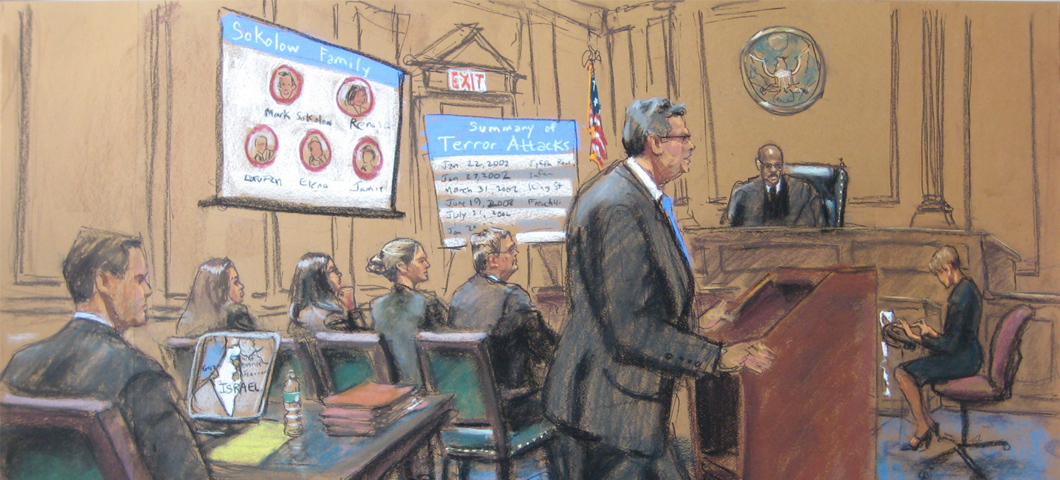The Benefits of Using Visual Aids in Trial Presentations
The Benefits of Using Visual Aids in Trial Presentations
Blog Article
The Power of Visuals in Test Presentations for a Winning Argument
The combination of visuals in test presentations has actually arised as an important factor in successfully connecting complicated debates to jurors. By utilizing different kinds of aesthetic help-- be it diagrams, photos, or computer animations-- attorneys can improve understanding and retention, inevitably shaping the jury's understanding of the instance. This method not just makes clear intricate narratives however additionally establishes an emotional resonance that can affect decision-making. As we discover the nuances of this technique, it comes to be important to think about exactly how details sorts of visuals can make a significant difference in test end results. What sensible strategies might attorneys utilize to maximize this capacity?
Importance of Visuals in Tests
In several lawful setups, visuals play a vital function in improving the effectiveness of trial discussions. The assimilation of aesthetic aspects can substantially affect jurors' understanding and retention of intricate info, thus forming their assumptions and choices. Visuals, such as charts, diagrams, and photographs, can streamline intricate narratives, making them much more obtainable and compelling.
In addition, the human brain procedures aesthetic info much more effectively than text, which underscores the relevance of including visuals into lawful disagreements. By translating thick legal concepts right into visual layouts, attorneys can facilitate more clear communication, making certain that crucial points are not forgotten during tests.
Furthermore, visuals offer to engage jurors on a psychological level, cultivating a connection to the instance that words alone may fall short to accomplish. The strategic usage of visuals can evoke empathy, motivating jurors to think about the human facets of the situation.
Inevitably, the significance of visuals in tests depends on their capability to enhance clearness, boost juror engagement, and enhance the narrative existing. This powerful combination is necessary for crafting persuasive disagreements that reverberate with jurors and affect the result of lawful process.
Sorts Of Visuals to Utilize
Reliable trial presentations can substantially gain from a range of aesthetic devices that cater to different elements of the instance. trial presentations. Making use of diagrams and charts can successfully damage down complex information, making it a lot more absorbable for jurors. Flowcharts can illustrate the sequence of events, while bar graphs might succinctly contrast pertinent information factors.

Animations and simulations can likewise play a crucial function, specifically in situations including technological data or elaborate circumstances. These visuals can dynamically represent processes or activities, giving clarity and interaction that static images might not attain.
In addition, infographics incorporate message and visuals to summarize important info successfully. They can provide timelines, data, and substantial instance factors in an aesthetically enticing fashion, making it easier for jurors to follow the argument.
Enhancing Comprehension and Retention

Enhancing comprehension and retention during test discussions is vital for making sure that jurors comprehend the vital aspects of a case. Aesthetic help act as powerful devices hereof, equating complex details check my site right into easily absorbable layouts. By using charts, layouts, and infographics, attorneys can simplify detailed information and highlight vital factors that may otherwise be ignored.
Researches have revealed that people keep information substantially better when it is offered aesthetically. This is especially important in a trial setup, where jurors may be bewildered by the volume of proof and testimony. By strategically including visuals, attorneys can route jurors' interest to one of the most important aspects of the instance, reinforcing their understanding and memory of the product provided.

Developing Engaging Discussions
Fascinating jurors' focus during test discussions is important for sharing a compelling story. Engaging discussions leverage aesthetic elements to develop a memorable experience that reverberates with jurors. The tactical use graphics, animations, and video clips can elucidate complicated details, making it much more accessible see this here and relatable.

Additionally, including storytelling strategies can improve involvement. Providing proof in a rational series that develops emotional charm allows jurors to get in touch with the material on an individual level. Diverse discussion styles, such as including short video or interactive elements, can additionally sustain passion and attention throughout the test.
Ultimately, an appealing discussion fosters an extra profound understanding of the situation, enabling jurors to better value the arguments being provided and bring about a more positive outcome.
Study and Success Stories
Numerous situation researches highlight the significant effect of visuals in test discussions, demonstrating their capability to affect juror assumptions and ultimately the outcomes of situations. A noteworthy situation entailing an individual injury case illustrated how the use of a 3D animation of the mishap scene cleared up complicated information. Jurors reported really feeling even more informed and empathetic, considerably swaying their decision in favor of the plaintiff.
In another instance, a corporate litigation case utilized infographics to present financial information and timelines, making detailed details obtainable. The graph made it possible for jurors to comprehend the subtleties of the situation a lot more successfully than verbal explanations alone. trial presentations. Therefore, the jury returned a judgment that surpassed the client's expectations
Moreover, a criminal protection instance utilized photos and video proof to develop an alibi. The compelling visuals not just helped in developing doubt but additionally reverberated psychologically with jurors, bring about a pardon. These success stories underscore the need of incorporating discover here visuals into test discussions, as they enhance understanding, retention, and ultimately, the influential power of legal arguments. The critical use of visuals is undoubtedly transforming the landscape of test advocacy.
Conclusion
In verdict, the strategic consolidation of visuals in test discussions significantly enhances jurors' comprehension and retention of intricate details. Engaging presentations, supported by compelling situation researches, show the profound impact that visuals can have on persuasive communication.
Report this page